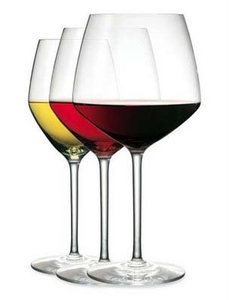Red, white and rose: what you need to know to understand wine
by Julia Litzky '12
SCIENCE & TECHNOLOGY EDITOR
On Monday and Wednesday, students gathered in the pub to sample a variety of wines as part of the FebFest’s wine tasting. Wines vary in sweetness, color and dryness. All of these factors combine to determine the quality of the wine and which wines people prefer. So how do vintners create such a variety of wines?
The primary difference in the taste and quality of wine is in the quality of the grapes. Grapes are ideal for wine-making because they ferment naturally without rotting. Although all fruits ferment, most need yeast or sugars added during the process in order prevent spoiling. Wild yeast—the fungi responsible for fermentation—lives in the air in vineyards and can be found around the grape stems. This yeast feeds on grape juice and uses the energy contained in the sugars in the juice to survive and reproduce, creating ethanol and carbon dioxide in the process.
Grapes can vary based on their acidity, sugar content and the amount of tannin they contain; all of these factors affect the final taste of the wine. Tannin, which is in the grape skins, helps wines to age well, but too much tannin makes wine bitter and astringent (meaning that it will give the drinker dry-mouth). Red wines tend to have more tannin than white. This is not, however, because different grapes are used for red wines. Most grape juice is clear, and so the difference between red and white wine is actually the length of time the juice, called the must in the wine-making process, is left in contact with the grape skins: the longer the contact, the redder the wine, and also the greater the amount of tannin in the wine. Some rose wines are made by allowing the must to briefly be in contact with the peels, although others are made by mixing white and red wines.
Vintners make red wines by fermenting the must with the grape skins, whereas they ferment the must alone to make white wines. The ethanol the yeast produce stays in the juice, while the carbon dioxide vaporizes out of the liquid. Champagne therefore requires an additional fermentation process after the wine is bottled. The carbon dioxide is trapped in the wine, resulting in bubbles once the bottle is opened.
Although grapes naturally contain small amounts of wild yeast, this yeast can be of a variety of strains, and some strains of yeast cannot survive in liquids with a high alcohol content. This would mean that the fermenting process would kill off the yeast before the alcohol content in the wine was high enough. As a result, vintners usually add sulfur to the must, which kills off the wild yeast, and then add controlled amounts of a single strain of yeast of their choice.
Red and white wines are also fermented under slightly different conditions. White wine takes two to 45 days to ferment, and is kept at a temperature between 45 and 65 degrees Fahrenheit. The temperature controls the taste of the wine, with lower temperatures resulting in fruitier flavors. Red wine is fermented at a much higher temperature, between 70 and 80 degrees Fahrenheit, but only takes two to five days to ferment.
The next step in making wine is the secondary fermentation, although this step is not always necessary. Grapes naturally contain malic acid, which can give wine a hard, strong taste. To resolve this, wine-makers add oenococcus oeni, a type of bacteria that converts malic acid to lactic acid, which is weaker and therefore doesn’t create such a strong taste. This secondary fermentation process results in a softer, mellower taste and a creamier texture.

